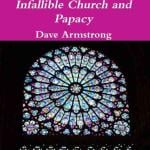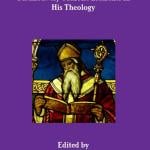
Cappella Sistina, Stato della Città del Vaticano (Wikimedia Commons public domain)
A new article has appeared in Interpreter: A Journal of Mormon Scripture, and I must report that it began to draw impassioned responses before it even appeared:
“What is Mormon Transhumanism? And is it Mormon?”
So, for the record, perhaps I should say something about its genesis.
I was approached quite a while ago about whether or not the Interpreter Foundation would be interested in publishing a piece by a president of the Mormon Transhumanist Association, in which he would set forth some of the basic thinking of Mormon transhumanists. I was interested, personally — partly because the author was somebody I’ve known for most of my life (and even more of his), but mostly because, knowing little about Mormon transhumanism (beyond some intriguing and perhaps very secondary ideas about how contemporary speculation on “terra-forming” might relate to scriptural teachings on the creation of the Earth), I was interested.
I soon found out, however, that many intelligent Latter-day Saints, including a number at Interpreter, have very deep concerns about Mormon transhumanism. So I felt that it would be best if the affirmative article were paired with an article from a non-transhumanist Mormon perspective.
One of our editors correctly suggested that Dr. Gregory Smith, a Canadian physician and a member of Interpreter’s board, possesses both the scientific and religious backgrounds to assess the movement and its ideas. He agreed to take a stab at it.
Not knowing much about the Mormon variety of transhumanism at that point, Dr. Smith asked whether there were key texts that would enable him to get his bearings. Someone on our internal list who is sympathetic to transhumanism provided a short list of materials, one of which turned out to be the article that Dr. Smith chose for review. (As he read through the various materials, it became clear to Dr. Smith that, for the sake of manageable brevity, he should restrict his response to a single piece.)
That introductory “What Is Mormon Transhumanism?” paper was a decent jumping off point for raising many of these issues since, as Dr. Smith has explained to me and others, it was (1) written as an introductory piece; (2) published in a non-LDS venue; (3) made enough firm, specific remarks or claims (including a formal syllogism) that it would lend itself well to reasoned analysis; and (4) written by the past president and founder of MTA, and so likely relatively representative of the group’s general thrust or approach.
As it happens, Dr. Smith’s conclusions ended up being fairly negative. But he wasn’t assigned to write a negative piece. Nor did he intend, from the start, that it be negative. In an email that I received from him earlier today, he indicates that “the way the review developed was fairly organic, and quite different from my initial planned approach, which was just information gathering for a possible future assignment regarding [the] hypothetical [pro-transhumanism] paper” that we expected to receive. (That paper never did materialize. The prospective author of it received a new employment assignment that involved a major relocation for himself and his family, and he was simply too busy. I do not fault him at all.)
Personally, I welcome debate. If, as some are claiming, Dr. Smith’s article misunderstand or misrepresents the article that it’s reviewing and/or Mormon transhumanism more generally, it might at least, as Dr. Smith has written, “serve as a barometer . . . of how a reasonably mainstream, reasonably informed member” might interpret certain Mormon transhumanist propositions or claims. Its publication can serve as an opportunity to clear the air. As the Prophet Joseph Smith said, it is “by proving contraries” that “truth is made manifest” (History of the Church 6:248).
Will there be disagreements? There already are. And, again, I’m perfectly content that there be such disagreements.
Will the reviewed author have an opportunity to respond?
Our already-established procedure is as follows: Any author of an article or a book that has been reviewed is as free as anybody else to respond to the review in a comment up to 5000 characters in length. (To set no limits would open the door, at least potentially, to anybody who wanted to use our site to post article- or even book-length “comments” completely beyond our editorial control.) And that can obviously be done as soon as the article appears, with no requirement of peer review or substantive approval by the Interpreter board — although, obviously, we reserve the right to refuse publication to comments that we deem abusive, obscene, insulting, or whatever. Then, of course, the author of the original review is entirely free (as is anybody else) to reply to the response. Comments do not carry the imprimatur, one way or another, of the Interpreter Foundation. But such comments have the advantage of appearing almost immediately, since they do not require page layout, source checking, and etc.; they needn’t wait even a week to appear.
Moreover, none of this precludes the submission of a full article thereafter. But it also means that such an article will be judged independently, by the normal Interpreter editorial process (which includes an overall editorial decision as well as, if it goes this far, peer review), and with no sense that Interpreter is obliged to afford “equal time” in all cases.
Posted from Newport Beach, California











